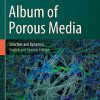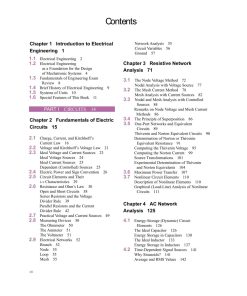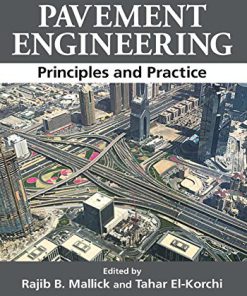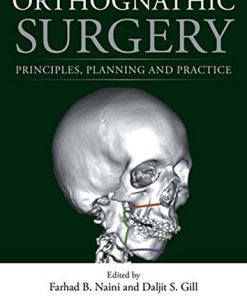Pavement Engineering Principles and Practice 4th by Mallick 0367758075 9780367758073
$50.00 Original price was: $50.00.$25.00Current price is: $25.00.
Pavement Engineering: Principles and Practice 4th by Rajib B Mallick – Ebook Instant Download/Delivery ISBN: 0367758075 ,9780367758073

Product details:
Table of contents:
Chapter 1 Introduction and Description of Pavements
1.1 Importance
1.2 Functions
1.3 Design and Construction
1.4 Maintenance and Rehabilitation
1.5 Important Issues
1.6 Functional Requirements
1.7 Types and Uses of Pavements
1.8 Different Features of Typical Asphalt Pavements
1.9 Different Features of Typical Concrete Pavements
1.9.1 Jointed Plain Concrete Pavements
1.9.2 Jointed Reinforced Concrete Pavements
1.9.3 Continuously Reinforced Concrete Pavements
1.9.4 Composite Pavements
1.9.5 Selecting the Type of Pavement
1.10 Research on Pavements
References
Chapter 2 Standards
2.1 Importance of Standards
2.2 The American Society of Testing and Materials
2.3 The American Society of State Highway and Transportation Officials
2.4 Use of Standards in Materials Selection, Mix Design, and Structural Design
2.5 Use of Standards in Quality Control in Construction
2.6 Important Specifications
References
Chapter 3 Principles of Mix, Structural Design, and Construction of Asphalt Pavement
3.1 Overview
3.2 Traffic and Load Distribution Concept
3.3 Materials and Layers
3.3.1 Soils
3.3.2 Aggregates
3.3.3 Asphalt
3.4 Environment
3.5 Mix Design
3.6 Structural Design
3.7 Link Between Mix and Structural Design
3.8 Theoretical Considerations for Structural Design
3.8.1 Hooke’s Theory of Elasticity
3.8.2 Boussinesq’s Method
3.8.3 Application, Extension, and Refinement of Boussinesq’s Method
3.8.4 Burmister’s Method for Two-Layer Systems
3.8.5 Odemark’s Method of Equivalent Thickness
3.8.6 Fox and Acum and Fox’s Solutions
3.8.7 Computer Programs
3.9 Principles of Good Construction
3.10 Putting Everything Together
References
Chapter 4 Principles of Structural Design, Mix Design, and Construction of Concrete Pavements
4.1 Overview
4.2 Structural Design
4.3 Theoretical Considerations
4.3.1 Stresses Due to Curvature and Bending in Slabs
4.3.2 Stresses Due to Temperature Curling
4.3.3 Stresses and Deflections Due to Applied Loading
4.3.3.1 Corner Slab Loading
4.3.3.2 Interior Slab Loading
4.3.3.3 Edge Slab Loading
4.4 Computer Programs for Rigid Pavements
4.5 Combined Stresses
4.6 Stresses Due to Friction
4.7 Joint Opening
4.8 Joints
4.8.1 Transverse Contraction Joints
4.8.2 Longitudinal Joints
4.8.3 Construction Joints
4.8.4 Expansion Joints
4.8.5 Joint Design
4.8.6 Joint Spacing for Airfields
4.8.7 Variable Joint Spacing
4.8.8 Skewed Joints
4.8.9 Aggregate Interlock Between Joints
4.8.10 Design of Dowels
4.8.11 Dowel Diameter Design
4.8.11.1 Allowable Bearing Stress
4.8.11.2 Bearing Stress on One Dowel
4.8.12 Tiebar Steel Design
4.8.13 Traffic and Loads
4.9 Concrete Properties and Mix Design
4.9.1 Hydration, Strength, and Materials
4.9.1.1 Construction
References
Chapter 5 Traffic
5.1 Different Types of Highway Traffic
5.2 Measurement of Traffic Loads
5.3 Load Equivalency Factor and Equivalent Single-Axle Load
5.3.1 Flexible Pavements
5.3.2 Rigid Pavements
5.4 Alternative Load Equivalent Factor Concept
5.5 Equivalent Single-Wheel Load
5.5.1 Conversion to Equivalent Gear
5.5.2 Conversion to Equivalent Annual Departure
5.6 Tire Pressure
5.7 Speed
5.7.1 Effect of Load and Tire Pressure
5.8 Aircraft Loading, Gear Configuration, and Tire Pressure
References
Chapter 6 Drainage
6.1 Sources and Effects of Water
6.2 Estimating Flow
6.2.1 Return Period
6.2.2 Rainfall Intensity
6.3 Hydroplaning and Surface Drainage System
6.4 Inlets
6.5 Subsurface Drainage System
6.5.1 Groundwater
6.5.2 Water Entering Through Cracks
6.5.3 Artesian Aquifers
6.5.4 Melting Snow
6.6 Design of Subsurface Drainage Structures
6.6.1 Design of Permeable Base
6.6.1.1 Materials for Permeable Base
6.6.2 Design of Separator or Filter Layer
6.6.2.1 Geotextile Separator Layer
6.6.3 Design of Edge Drains
6.7 Consideration of Drainage in Pavement Design
6.8 Pumping in Rigid Pavements
6.9 Use of Software for Design of Drainage Structures
References
Chapter 7 Soil
7.1 Overview
7.2 Soils in Subgrade
7.3 Mass-Volume Relationships
7.4 Grain Size Distribution: Gradation
7.5 Effects of Water
7.6 Soil Classification
7.6.1 AASHTO Method
7.6.2 Unified Soil Classification System (ASTM)
7.7 Density and Optimum Moisture Content
7.8 Hydraulic Conductivity
7.9 Frost Susceptibility
7.10 Swell Potential
7.11 Stiffness and Strength of Soils
7.11.1 California Bearing Ratio Test (AASHTO T 193)
7.11.2 Resilient Modulus Test (AASHTO T 307)
7.11.3 Dynamic Cone Penetrometer (ASTM D 6951)
7.11.4 Light Weight Deflectometer
7.12 Subgrade Soil Tests for Rigid Pavements
7.12.1 Plate Load Test
7.13 Subbase and Unstabilized Base
7.14 Soil Stabilization Concepts and Methods: Chemical and Mechanical
7.14.1 Mechanical Stabilization by Densification or Compaction
7.14.1.1 Effect of Compaction on Soil Properties
7.14.1.2 Field Compaction
7.14.1.3 Field Control
7.14.1.4 Measuring Devices
7.14.1.5 Intelligent Soil Compaction System
7.14.2 Use of Geosynthetics
7.14.3 Lime Treatment of Soils
7.14.4 Cement Treatment of Soil
7.14.4.1 Mixture Design Process
7.14.5 Asphalt (Bituminous) Treated Soil
7.14.5.1 Stabilization Mechanism with Asphalt Treatment
7.14.5.2 Mix Design Procedure
7.15 Dust Control
References
Chapter 8 Aggregates for Asphalt and Concrete Mixes
8.1 Definition, Parent Rock, and Types
8.2 Suitability for Application
8.3 Production
8.4 Overview of Desirable Properties
8.4.1 Properties Critical for Structural Layers
8.4.2 Properties Critical for Drainage Layers
8.4.3 Properties Critical for Asphalt Mix Layers
8.4.4 Properties Critical for Cement Concrete Layers
8.5 Gradation for Asphalt Pavements
8.5.1 Aggregate Tests
8.6 Specific Gravities and Absorption
8.7 Cleanliness and Deleterious Materials
8.8 Toughness or Resistance against Abrasion Loss
8.9 Particle Shape and Surface Texture
8.10 Durability/Soundness
8.11 Expansive Characteristics
8.12 Polishing and Frictional Characteristics
8.13 Aggregate Tests Specifically for Concrete
8.13.1 Fineness Modulus (ASTM C 125)
8.13.2 Gradation
8.13.3 Bulk Density and Voids in Aggregates Test
8.14 Automated Aggregate Analysis (AASHTO TP 81 and PP 64)
8.15 Artificial Aggregates
References
Chapter 9 Asphalt and Emulsions
9.1 Asphalt Binder
9.2 Naturally Occurring Asphalts
9.2.1 Lake Asphalt
9.2.2 Rock Asphalt
9.2.3 Gilsonite
9.3 Refined Asphalt from Crude Oil
9.4 Safe Delivery, Storage, and Handling of Asphalts
9.4.1 Causes of Hazards and Precautions
9.4.2 Health Hazards
9.4.3 Precautions and Good Practices
9.5 Asphalt Binder Properties
9.5.1 Specific Gravity: ASTM D 70
9.5.2 Cleveland Open Cup Method (Flash Point): ASTM D 92
9.5.3 Solubility Test: ASTM D 2042
9.5.4 Spot Test: AASHTO T 102
9.5.5 Penetration: ASTM D 5
9.5.6 Viscosity Tests
9.5.7 Softening Point (Ring and Ball) Test: ASTM D 36
9.5.8 Fraass Breaking Point Test: BS EN 12593, BS 2000-8
9.5.9 Ductility: ASTM D 113
9.5.10 Thin Film Oven Test (TFOT): ASTM D 1754
9.5.11 Rolling Thin Film Oven Test (RTFOT): ASTM D 2872, BS EN 12591, AASHTO T 240
9.6 Asphalt Binder Properties and Pavement Distress and Performance
9.6.1 Aging of Asphalt Binder
9.6.1.1 Hardening
9.7 Stiffness
9.7.1 Viscosity for Stiffness
9.8 Viscoelastic Nature of Asphalt and Direct Measurement of Stiffness
9.9 Tensile Behavior
9.10 Superpave (Superior Performing Asphalt Pavements)
9.10.1 High-Temperature Viscosity
9.10.2 Complex Modulus and Phase Angle
9.10.3 Aging Tests
9.10.4 DSR Tests Conducted on Aged Asphalt
9.10.5 Low-Temperature Stiffness (ASTM D 6648, AASHTO T 313)
9.10.6 Direct Tension Test (ASTM D 6723, AASHTO T 314)
9.10.7 Superpave Requirements
9.10.7.1 Explanation
9.10.8 Multiple Stress Creep Recovery Test (AASHTO T 350, Specification, AASHTO M 332)
9.11 Recent Developments
9.12 Recovery of Asphalt Binder from Asphalt Mix
9.13 Adhesion Properties
9.14 Asphalt Emulsions
9.14.1 Properties
9.14.2 Tests for Asphalt Emulsions
9.14.3 Classification of Emulsions and Selection
References
Chapter 10 Distress and Performance
10.1 Distresses in Asphalt Pavements
10.1.1 Bleeding
10.1.2 Block Cracking
10.1.3 Corrugations
10.1.4 Delamination
10.1.5 Edge Cracks
10.1.6 Fatigue Cracks and Edge Fatigue Cracks
10.1.7 Longitudinal Joint Cracks
10.1.8 Polished Aggregate
10.1.9 Potholes
10.1.10 Raveling
10.1.11 Reflective Cracking
10.1.12 Rutting
10.1.13 Slippage Crack
10.1.14 Thermal Cracks
10.2 Distresses in Concrete Pavements
10.2.1 Corner Breaks
10.2.2 Durability Cracking (or “D” Cracking)
10.2.3 Longitudinal Cracking
10.2.4 Transverse Cracking
10.2.5 Spalling of Transverse Joints
10.2.6 Map Cracking and Scaling
10.2.7 Polished Aggregate
10.2.8 Popouts
10.2.9 Blowups
10.2.10 Faulting of Transverse Joints and Cracks
10.2.11 Lane-to-Shoulder Drop-Off
10.2.12 Lane-to-Shoulder Separation
10.2.13 Patch/Patch Deterioration
10.2.14 Water Bleeding and Pumping
10.2.15 Punchouts
10.2.16 Joint Seal Damage
10.3 Consideration of Performance
10.4 Damage
10.5 Forensic Investigation for Determination of Type and Cause of Distress
10.5.1 Forensic Investigation Plan
10.5.2 Nondestructive and Destructive Tests
References
Chapter 11 Consideration of Major Distress Mechanisms and Material Characterization for Asphalt Pavements
11.1 Fatigue Cracking
11.1.1 Material Characterization Tests
11.1.1.1 Indirect Tensile Strength: Test Method
11.1.1.2 Resilient Modulus
11.1.1.3 Dynamic Modulus (AASHTO TP 62–03)
11.1.1.4 Texas Overlay Tester (Texas OT)
11.1.2 Models
11.1.2.1 Simplified Viscoelastic Continuum Damage (S-VECD) Model
11.1.3 Definition of Failure
11.1.4 Use of Models
11.1.5 Relationship Between Mix Design and Fatigue Performance
11.1.6 Relationship Between Pavement Structure and Fatigue Performance
11.1.6.1 Steps for Avoiding Premature Fatigue Cracking
11.2 Thermal Cracking
11.2.1 Material Characterization
11.2.2 Models
11.2.2.1 Environmental Conditions
11.2.2.2 Regression Equation Approach (Hajek and Haas, 1972)
11.2.2.3 Fracture Mechanics Approach: SHRP Thermal Cracking Model
11.2.2.4 Models for Cracking
11.2.3 Cracking and Properties of Asphalts and Aggregates
11.3 Rutting or Permanent Deformation
11.3.1 Material Characterization
11.3.1.1 Creep Testing
11.3.1.2 Triaxial Test
11.3.2 Models
11.3.2.1 Consideration of Rutting in Asphalt Mix Only
11.3.2.2 Statistical Predictive Models on the Basis of Different Properties (Baladi, 1989)
11.3.2.3 Layered Vertical Permanent Strain Approach
11.3.2.4 Permanent Strain Rate Method
11.3.2.5 Plastic-Elastic Vertical Strain Ratio Method
11.3.2.6 Rutting Rate Method (Majidzadeh, 1981)
11.3.2.7 Alternate Model Relating Tertiary Flow Characteristics to Mix Properties
11.3.2.8 Models for Unbound Materials
11.3.2.9 Ayres Combined Model for Subgrade and Granular Materials (NCHRP, 2004)
11.3.2.10 Equivalent Temperature Concept
11.3.2.11 El-Basyouny and Witczak Model (NCHRP, 2004)
11.3.3 Definition of Failure
11.4 Smoothness Consideration
11.5 Top-Down Cracking
11.5.1 Pavement Surface Characteristics
References
Chapter 12 Mix and Structural Design of Asphalt Mix Layers
12.1 Physical and Volumetric Properties of Asphalt Mix
12.1.1 Bulk-Specific Gravity of Compacted Asphalt Mix (Gmb)
12.1.2 Theoretical Maximum Density or Maximum Specific Gravity of the Mix (Gmm)/Rice Specific Gravity
12.2 Mix Design Methods
12.2.1 Hveem Method (ASTM D 1560, D 1561)
12.2.2 Marshall Method
12.2.3 Superpave Method
12.2.3.1 Mix Design Systems of South Africa, France, the United Kingdom, and Australia
12.3 Balanced Mix Design (BMD)
12.4 Structural Design
12.4.1 Empirical Methods
12.4.1.1 California Bearing Ratio Method
12.4.1.2 American Association of State Highway and Transportation Officials (AASHTO) Method
12.4.2 Mechanistic-Empirical Methods
12.4.2.1 Design of Low Volume Roads
12.4.2.2 Example of Structural Design Procedure Using Mechanistic Principles
12.4.2.3 NCHRP 1-37A Mechanistic-Empirical Design Guide
12.5 Thickness of Hot Mix Asphalt Layers to Avoid Excessive Permeability
References
Chapter 13 Construction of Asphalt Pavements
13.1 Overview
13.1.1 Production
13.1.2 Transportation and Laydown
13.2 Description and Requirements of Components in Hot Mix Asphalt-Producing Plants
13.2.1 Aggregate Stockpiles
13.2.2 Cold Feed Bins
13.2.3 Drum Mix Plant
13.2.4 Hot Elevator and Bins
13.2.5 Pugmill
13.2.6 Hauling and Storage
13.2.7 Drum Plant
13.2.8 Dust Collection from HMA Plants
13.2.9 Asphalt Storage Tanks
13.3 Equipment Used for Transportation, Laydown, and Compaction
13.3.1 Trucks
13.3.2 Pavers
13.3.3 Rollers
13.4 Important Factors
13.5 Construction of Granular Layers
13.5.1 Recycled Concrete Aggregate (RCA) and Recycled Concrete Material (RCM) in Granular or Stabilized Base Course
13.5.2 Steps in the Construction of an Asphalt Pavement
13.6 Specifications
13.6.1 Variability of Materials
13.6.2 Use of Quality Control Charts
13.7 Preparation of Subgrade and Construction of Base and Subbase Layers
13.8 Quality Control and Quality Assurance
13.9 Construction of Longitudinal Joints
13.9.1 Techniques of Constructing Good Longitudinal Joints
13.9.1.1 Combination of Notched Wedge Joint, Rubberized Asphalt Tack Coat, and Minimum Joint Density Requirements
13.9.1.2 Rubberized Asphalt Tack Coat and Minimum Joint Density Requirements
13.9.1.3 Notched Wedge Joint and Minimum Joint Density Requirements
13.9.1.4 Cutting Wheel and Minimum Joint Density Requirements
13.9.1.5 Infrared Joint Heating and Minimum Joint Density Requirements
References
Chapter 14 Concrete Fundamentals for Rigid Pavements
14.1 Concrete
14.2 Aggregates
14.3 Cement
14.3.1 Types of Portland Cement
14.4 Water
14.5 Hydration
14.6 Steel in Concrete
References
Chapter 15 Distress Models and Material Characterization for Concrete Pavements
15.1 Distresses and Models
15.1.1 Cracking
15.1.1.1 Fatigue Cracking in JPCP
15.1.1.2 Zero-Maintenance Design Fatigue Model
15.1.1.3 Calibrated Mechanistic Design Fatigue Model
15.1.1.4 ERES-COE Fatigue Model
15.1.1.5 PCA Fatigue Model
15.1.1.6 ARE Fatigue Model
15.1.1.7 Vesic Distress Model
15.1.1.8 RISC Distress Function
15.1.1.9 Transverse Cracking
15.1.2 Transverse Joint Faulting in Jointed Plain Concrete Pavements
15.1.2.1 Models to Predict Faulting
15.1.2.2 Slab Corner Deflections
15.1.3 Erosion Characterization of Base/Subbase
15.1.4 Characterizing Free Water Within a Pavement Structure
15.1.5 PRS M-E Transverse Joint-Faulting Prediction Model
15.1.6 Punchouts in Continuously Reinforced Concrete Pavements
15.1.6.1 Development of CRCP Punchout Models
15.1.6.2 Punchout Distress Model
15.1.7 Smoothness Considerations
15.2 Tests for Concrete
15.2.1 Flexural Strength Tests
15.2.2 Compressive Strength
15.2.3 Tensile Strength
15.2.4 Coefficient of Thermal Expansion Test
15.2.5 Fatigue Testing for PCC
15.3 Composite Pavements
15.4 Distress Mechanism for Design of Composite Pavements
References
Chapter 16 Mix Design and Structural Design for Concrete Pavements
16.1 Mix Design
16.1.1 Concrete Strength
16.1.2 Water-to-Cementitious Materials Ratio
16.1.3 Selection of the Water-to-Cementitious Materials Ratio
16.1.4 Aggregates
16.1.5 Air Content in Concrete
16.1.6 Slump
16.1.7 Water Content
16.1.8 Cementing Materials Content and Type
16.1.9 Admixtures
16.1.10 Example of Mix Design
16.2 Structural Design
16.2.1 AASHTO Method (AASHTO, 1993)
16.2.2 Design Input Parameters
16.2.2.1 Reliability
16.2.2.2 Serviceability
16.2.2.3 Drainage Coefficient (Cd)
16.2.2.4 Load Transfer Coefficient (J)
16.2.3 Rigid Foundation at Shallow Depth
16.2.4 Effective Modulus of Subgrade Reaction
16.2.4.1 Software Solutions
16.2.4.2 AASHTO 1998 Supplement to Design Guide
16.2.4.3 MEPDG Design Guide
16.2.4.4 Continuously Reinforced Concrete Pavements
16.2.4.5 CRCP Design Criteria
16.2.4.6 Structural Performance
16.2.4.7 Functional Performance
16.2.4.8 Reinforcement for CRCP
16.2.4.9 Design Methods for CRCP
16.2.4.10 AASHTO MEPDG
16.2.4.11 AASHTO-86/93 Design Procedure
16.2.4.12 Reinforcement Design
16.2.4.13 Design Variables for Longitudinal Reinforcement: AASHTO Method
16.2.4.14 Limiting Criteria
16.2.4.15 Longitudinal Reinforcement Design Procedure
16.3 Composite Pavements Structural Design
References
Chapter 17 Construction of Concrete Pavements
17.1 Overview
17.2 Concrete Production
17.3 Preparation of Subgrade and Base
17.4 Presetting Reinforcements such as Dowel Bars, Tiebars, and Continuous Reinforcement
17.4.1 Dowel Bars
17.4.2 Tiebars
17.4.2.1 Reinforcing Steel (CRCP)
17.5 PCC Slab Construction
17.5.1 Slipform Paving
17.5.2 Stringlines for Slipform Paver
17.5.3 Fixed Form Paving
17.5.4 Concrete Placement
17.5.5 Consolidation
17.5.6 Screeding
17.6 Finishing
17.6.1 Bullfloating
17.6.2 Texturing
17.6.3 Protection of Pavement Surface from Rain
17.6.4 Construction Headers
17.7 Curing
17.7.1 Evaporation Rate
17.8 Paving in Hot and Cold Weather Conditions
17.8.1 Edge Slump
17.8.2 Smoothness
17.9 Jointing
17.10 HIPERPAV Software
17.11 Joint Sealing
17.11.1 Quality Assurance/Quality Control (QC/QA)
17.11.2 Differential Scanning Calorimeter (DSC)
17.11.3 Blaine Fineness
17.11.4 Gradation
17.11.5 Penetration Resistance
17.11.6 Cement Materials Temperature Profile (the “Coffee Cup Test”)
17.11.7 Water-Cement Ratio (Microwave Oven Test)
17.11.8 Concrete and Subgrade Temperature and Environmental Conditions
17.11.9 Concrete Strength (Early Age)
17.11.10 Air Void Analyzer
17.11.11 Maturity Test
17.11.11.1 Consistency
17.11.11.2 Air Content
17.11.11.3 Density and Yield
17.11.11.4 Sampling Fresh Concrete
References
Chapter 18 Precast Concrete Pavements
18.1 Precast Pavement Applications
18.2 Precast Concrete Pavement Concepts
18.2.1 Intermittent Repairs of Concrete Pavements
18.2.2 Continuous Application
18.2.2.1 Jointed Precast Concrete Pavements
18.2.2.2 Precast Prestressed Concrete Pavements
18.3 Incrementally Connected Precast Concrete Pavements
18.4 PCP Load Transfer System
18.5 Transverse Joint Spacing Requirements
18.5.1 Load Transfer Provisions
18.5.1.1 Design of Load Transfer System
18.5.1.2 Dowel Bar Slot Patching Material
18.5.2 PCP Support System
18.5.2.1 Bedding for Repair Applications
18.5.2.2 Bedding for Continuous Application
18.5.3 PCP Panel Fabrication
18.6 Performance of Installed Precast Concrete Pavements
18.6.1 Deflection Testing of JPrCP
18.6.1.1 The I-675 in Michigan (Intermittent Repair Project)
18.6.1.2 The I-15 in Ontario, California (Continuous Jointed PCP—Fort Miller Super-Slab JPrCP System)
18.6.1.3 The I-57 in Missouri (PPCP Projects Based on the Texas PPCP System)
18.6.2 Summary of Findings from Field Testing
18.7 Concrete Requirements
References
Chapter 19 Pavement Surface Characteristics
19.1 Overview
19.1.1 Pavement Surface Textures
19.1.1.1 Microtexture
19.1.1.2 Macrotexture
19.1.1.3 The Next Generation Concrete Surface (NGCS) Texture
19.1.2 Pavement Surface Friction
19.1.2.1 Friction Number
19.1.2.2 International Friction Index
19.1.3 Pavement Surface-Tire Noise
19.1.3.1 Measurement Techniques of Pavement-Tire Noise
19.1.4 Ride Quality
19.2 Pavement Surface Characteristics Design
19.2.1 Aggregate Testing and Characterization
19.2.1.1 Aggregate Composition/Structure and Mineral Hardness
19.2.1.2 Aggregate Angularity, Shape, and Texture
19.2.1.3 Abrasion/Wear Resistance
19.2.1.4 Polish Resistance
19.2.1.5 Soundness
19.2.1.6 Aggregate Test Criteria
19.2.2 Surface Mix Types and Texturing Techniques
19.2.3 Friction Design Categories
19.2.4 Project-Level Design Guidelines
19.3 Pavement Surface Characteristics Management
References
Chapter 20 Maintenance and Rehabilitation of Pavements: Pavement Management Systems
20.1 Overview
20.2 Steps in PMS
20.3 Different PMS Approaches
20.3.1 Criteria for Making Decisions
20.4 Distress Survey
20.5 Maintenance and Rehabilitation of Asphalt Pavements
20.5.1 Maintenance
20.5.1.1 Primary Corrective Maintenance Activities
20.5.1.2 Primary Preventive Maintenance Activities
20.5.2 Recycling
20.5.2.1 Hot In-Place Recycling
20.5.2.2 Cold Recycling
20.5.2.3 Cold Milling
20.5.2.4 Hot Mix Recycling
20.6 Maintenance and Rehabilitation of Concrete Pavements
20.6.1 Joint and Crack Sealing
20.6.2 Slab Stabilization
20.6.3 Diamond Grinding
20.6.4 Load Transfer Devices
20.6.5 Precast Panels for Repair and Rehabilitation
20.6.6 Portland Cement Concrete Overlays
20.7 Warranty Projects
References
Chapter 21 Airport Pavements
21.1 Types, Importance, and Specifications
21.2 Structural Design of Airport Asphalt Mix Pavements
21.2.1 Design of Flexible Pavement over Existing Pavement
21.2.1.1 HMA Overlay on Existing Flexible Pavement
21.2.1.2 HMA Overlay on Existing Rigid Pavement with or without Existing HMA Overlay
21.3 Design of Concrete Pavements
21.4 Design for Airport Pavements with Light Aircrafts
21.5 Advanced Design Methods
21.5.1 Asphalt Pavements
21.5.1.1 For Vertical Strain εv on Top of the Subgrade
21.5.1.2 For Horizontal Strain eh at the Bottom of the Surface Layer
21.5.2 Rigid Pavements
21.6 Nondestructive Testing and Rehabilitation of Airfield Pavements
21.7 ACN-PCN
21.8 Rehabilitation of PCC Airport Pavements
21.9 Construction Quality Control and Acceptance Testing
21.10 Constructing, Checking, and Improving Friction/Skid Resistance Drainage of Runways
21.11 Asphalt Mixes for Airport Pavement
21.11.1 Fuel-Resistant Mix
21.11.2 Construction and Maintenance of Longitudinal Joints
21.11.3 Time of Construction
21.11.4 Deicing and Anti-Icing
21.12 Maintenance of Airport Pavements
21.13 Common Problems in Airport Pavements
References
Chapter 22 Nondestructive Tests
22.1 Nuclear Gage
22.2 Falling Weight Deflectometer
22.2.1 Direct Use of Deflections
22.2.1.1 Relationship Between Deflection Bowl Parameters and Stresses and Strains at Various Locations in the Pavement
22.2.2 Back-Calculation
22.2.2.1 Modeling Thin Layers
22.2.2.2 Modeling Subgrades
22.2.2.3 Modeling Bedrock
22.2.2.4 Stress-Dependent Materials
22.2.2.5 Spatial Variations
22.2.2.6 Seasonal Variations
22.2.2.7 Detection of Voids in PCC Pavements
22.2.2.8 Detection of Nonresilient Pavement Layer Behavior
22.2.2.9 Evaluation of Experimental Paving Materials
22.2.2.10 Determination of Load Transfer Efficiency for Jointed PCC Pavements
22.3 Other Applications of FWD Data for Rigid Pavements
22.4 Light Weight Deflectometer (ASTM E 2583)
22.5 Continuous Deflection Device
22.6 GeoGauge (Soil Stiffness Gauge) for Soil Compaction
22.7 Ground-Penetrating Radar
22.8 Portable Seismic Pavement Analyzer
22.9 Free Free Resonant Column Test
22.10 Ultrasonic Test
22.11 Magnetic Induction Tomography
22.12 Infrared Devices
22.13 Light Detection and Ranging (LIDAR) Systems
References
Chapter 23 Economic Analysis and Cost-Saving Concepts
23.1 Economic Analysis
23.1.1 Engineering Economy
23.1.2 Concept of Life Cycle Cost
23.1.3 Techniques
23.1.4 Costs in Life Cycle Cost Analysis
23.1.5 Probabilistic Approach
23.1.6 Information on Life Cycle Cost Analysis for Pavements
23.1.7 Software for Running Life Cycle Cost Analysis
23.2 Cost-Saving Concepts
23.2.1 Principles of Perpetual Pavements
23.2.2 Economic Benefits of Recycling
References
Chapter 24 Instrumentation in Asphalt and Concrete Pavement
24.1 Temperature
24.2 Soil Moisture Content
24.3 Frost Depth
24.4 Strain in Asphalt or Concrete Pavement and Soil Layers
24.5 Stress in Soil Layers
24.6 Deflection in Layers
24.7 Data Acquisition Systems
Chapter 25 Specialty Applications
25.1 Asphalt Mixtures
25.1.1 Polymer-Modified Asphalt
25.1.2 Asphalt Rubber Mixes
25.1.3 Stone Matrix Asphalt
25.1.4 Porous Friction Course
25.1.5 Warm Mix Asphalt
25.1.5.1 WMA and RAP
25.1.5.2 Adoption
25.1.5.3 Regular Use of WMA
25.1.5.4 Mix Design
25.1.5.5 Moisture Susceptibility Concern
25.1.6 Ultrathin Wearing Course
25.2 Concrete Whitetopping
25.3 Porous Asphalt Pavements
25.4 Pervious Concrete
25.5 Waste Plastics in Hot Mix Asphalt (HMA) Layers
References
Chapter 26 Sustainable Pavement Engineering
26.1 Overview
26.1.1 Sustainable Construction (SC)
26.1.1.1 Sustainability in Transportation and Pavement Engineering
26.1.2 Life Cycle Assessment (LCA)
26.1.3 Sustainable Construction Practices
26.2 Sustainable Pavement Engineering
26.2.1 Sustainable Asphalt of Flexible Pavements
26.2.2 Sustainable Rigid or Concrete Pavements
26.2.3 Measuring Sustainability
26.2.4 Pavement and Rehabilitation Design to Improve Sustainability
26.2.5 Construction Considerations
26.2.6 User Phase Consideration
26.2.7 Guidelines for Measuring and Improving Sustainability
26.3 Resilient Pavements
References
Chapter 27 Environmental Mitigation in Transportation Projects
27.1 Introduction
27.2 How Transportation Impacts the Environment
27.3 NEPA: A Model for Assessing Impacts and Developing Mitigation Measures
27.4 Framing Mitigation Best Practices
27.4.1 Project Conception
27.4.2 Impact Assessment
27.4.2.1 The Environmental Assessment (EA)
27.4.2.2 The Environmental Impact Statement (EIS)
27.4.2.3 SEPA Impact Assessment Examples
27.4.3 Alternatives Analysis
27.4.4 Public Involvement and Review
27.5 Enforcement and Post-Project Monitoring
27.6 Transportation Planning and Regional Mitigation Approaches
People also search:
pavement engineering principles and practice pdf
what are engineering principles and practices
principles of highway engineering and traffic analysis 6th edition pdf
principles of highway engineering and traffic analysis 5th edition pdf
fhwa pavement management
You may also like…
Technique - Energy: Renewable Energy
Housekeeping & Leisure - Interior Design & Decoration
Pavement Engineering: Principles and Practice, Third Edition El-Korchi
Politics & Philosophy - Social Sciences
Ethnography Principles in Practice 4th Edition Martyn Hammersley Paul Atkinson
Computers - Security
Computer Security Principles and Practice 4th Edition by William Stallings 0134794109 9780134794105












